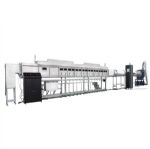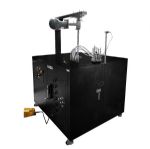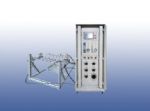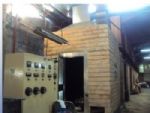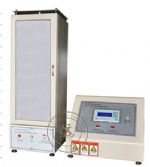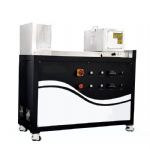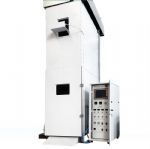- Product Catagory
- Tensile Strength Testing Machine
- Cables Flammability Testing Equipment
- Building Materials Flammability Testing Equipment
- Luggage Test Machine
- Textile Testing Equipment
- Color Fastness Instruments
- Textile Physical Test Instruments
- Lab Dyeing Instruments
- Flammability Test Chamber for Textile
- Consumables for Textile Testing
- Toys Safety Testing Equipment
- Physical & Mechanical Testing
- Flammability Testing
- Clamps for Toy Testing
- EN71-8,ISO8124-4
- Furniture Testing Machine
- Chair Testing Machine
- Mattress Testing Machine
- Furniture Testing Equipment
- Tables Test Machines
- Enviromental Chamber
- Leather and Footwear Testing Instruments
- Mobile Phone Testing Equipment
- Contact us
- Tel:86-769-23830463,86-13751491529
- Fax:86-769-38818154
- Contact:Ivy Xie
 [email protected]
[email protected] - Msn
 [email protected]
[email protected] Whatsapp/Wechat +8613751491529
Whatsapp/Wechat +8613751491529- Skype
 skylineinstruments
skylineinstruments happy_go_lucky4477
happy_go_lucky4477
- Site:Home > Cables Flammability Testing Equipment > Steiner Tunnel Test Apparatus
- Product Images
- detailed description
Steiner Tunnel Test Apparatus for Flame Retardant Performance Test of CMP Grade Wire and Cable
Product introduction
UL910 covers the test method for determining values of flame-propagation distance and optical smoke density for electrical and optical-fiber cables that are intended to be installed in ducts, plenums, and other spaces used to transport environmental air without the cables being enclosed in raceways in those spaces.
Technical parameters
1.The fire test chamber is exactly the same as that of UL fire lab.
2.The fire test chamber is a rectangular horizontal duct with a removable lid.
3.The sides and base of the chamber are lined with an insulating firebrick.
4.One side of the fire testing chamber is provided with double quartz observation windows with the inside pane flush mounted.
5.Multiple windows are located along the tunnel so that the entire length of the test sample is observable from outside the fire chamber.
6.The lid is consist of a removable noncombustible metal and mineral composite structure.
7.The lid covers the fire test chamber and the test samples maintains in an unwarped and flat condition.
8.Two NFP elbow gas burners delivering flames upward against the surface of the test samples.
9.Remote spark ignition mode, to ensure the safety.
10.An air intake shutter is located upstream of the burner.
11.Six refractory firebricks along the side walls of the chamber for proper combustion.
12.The static pressure meter inserted through the top at the midwidth of the tunnel below the ceiling.
13.The exhaust end is fitted with a gradual rectangular-to-round transition piece.
14.The exhaust duct is insulated with high temperature mineral composition material.
15.An exhaust fan is installed at the end of the exhaust duct.
16.The air flow and draft pressure are controlled by automatically damper and Frequency converter.
17.A photometer system consisting of a lamp and photocell mounted on a horizontal section, and with the light beam directed upward along the vertical axis of the vent pipe.
18.Thermocouples installed inside and outside the floor of the test chamber.
19.Data acquisition system and software.Product Feature and Application of the Steiner Tunnel Test Apparatus
1. The stainless steel combustion test box body has a brick structure inside, which can resist the flame impact and has good thermal insulation performance;
2. Double-layer quartz glass observation window, can observe the flame spread distance, and record;
3. Using the indicator light recording method, the flame spread distance can be recorded more intuitively;
4. The cooling water circulation support bracket can support the combustion cover such as calcium silicate board;
5. Equipped with 2mm thick 304 stainless steel water seal groove to ensure that the smoke does not leak during the test;
6. 304 stainless steel insulation body cover, filled with high temperature insulation material;
7. Equipped with an escalator sample installation platform to facilitate the installation, removal of samples and inspection of the furnace;
8. Independent multi-function exhaust pressure detecting device: real-time monitoring of exhaust pressure changes during testing. Detection range 0~250Pa, accuracy ±0.5Pa, system indication pressure test accuracy ±2Pa;
9. Fan: 380V, 50Hz, 3Kw equipped with frequency converter can change the wind speed, the flow rate is at least 8000m3/h, and the flue gas generated by the sample combustion can be discharged out of the room in time to ensure the safety of the test;
10. Double-head gas burner: It can output standard 5.3MJ/min heat, and can control the gas flow rate by mass flow meter according to different standards. The measuring range is 0~160L/min, which can change the calorific value output of the burner and the maximum output. Energy up to 100MJ/min;
11. Automatic ignition system: to ensure the safety of the test, high-voltage igniter, 44KV, 50mA, the minimum high voltage of the ignition electrode is 1.8kVp;
12. Smoke density system: Provide a separate signal processing system to ensure that the sensor is linear;
13. Automatically record temperature and smoke sensing signals, and the sample collection frequency is 1 Hz;
14. Mass flow controller: 316 stainless steel material, the maximum pressure of 1000psig (70bar), leakage rate is less than 1 × 10-7sml / s, NIST calibration, 0 ~ 5VDC and 4 ~ 20mA signal, loop protection, propane flow range 0 ~ 2.3g / s, control speed ≤ 2s, control accuracy of ± 1% FS, repeatability ± 0.5FS, temperature range 0 ~ 50 ° C, humidity range 0 ~ 90%, digital display, automatic The gas supply meets the 5000Btu (5.3MJ)/min heat requirement during the control test, and the software automatically records the amount of gas used;
15. Standard test software can automatically record test data such as system wind speed, temperature and smoke density.Product Details of the Steiner Tunnel Test Apparatus
UL910/NFPA262 Steiner horizontal tunnel furnace is mainly used for the flame retardant performance test of CMP grade wire and cable. It is mainly used for cables in horizontal subsystems that are directly laid in ventilation or forced ventilation without metal pipelines. The flame retardant test standard represents the most stringent flame retardant test standard for UL and even the entire wire and cable flame retardant test. Only the fluorine material sheath cable can pass the flame retardant test method. Due to the high decomposition temperature of fluoroplastics (greater than 400 degrees), the ignition point is also high (800 degrees or more), and it is not easy to burn when the fire is not strong, so it has better fire resistance than other organic materials.
The purpose of this test is to determine whether the flame-propagation and smoke-generating characteristics of cables without raceways are within the limits specified in the National Electrical Code (NEC). Cables having adequate fire-resistant and low-smoke-producing characteristics need not comply with general wiring methods when the cables are installed (without raceways) in environmental-air ducts, concealed hollow building spaces used as ducts for environmental air, and other environmental-air-handling spaces not specifically excluded (areas involving grease and flammable dust, vapor, and the like). This test method is essentially the same as the test method described in the Standard Method of Test for Fire and Smoke Characteristics of Wires and Cables, NFPA 262.
Application:It is mainly used for cables in horizontal subsystems that are directly laid in a ventilated or forced air environment without using metal pipelines.
Standards:NFPA 262 UL910
Dimension:21300 mm (L) x 1100 mm (D) x 2100 mm (H)
Weight:1770kg
Electrical: 115 Volts AC 60Hz / 230 Volts AC 50Hz.Installation requirements
Electrical: 380 Volts AC, 20KW
Ambient Temperature: Operating 15°C to 35°C.
Gas: Methane and air compressor
Utility: Crane
- Related ProductsMore>>



